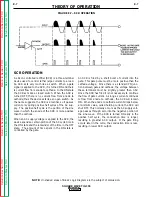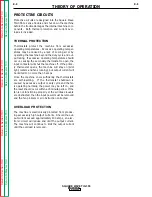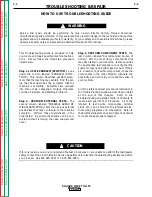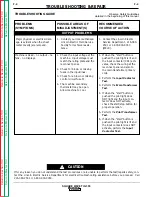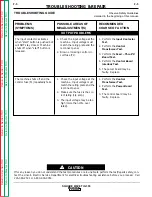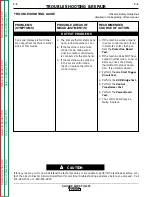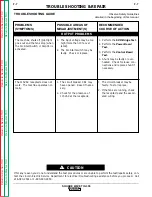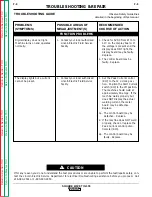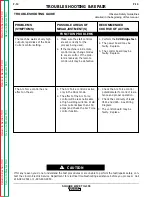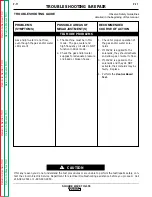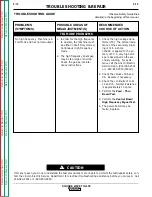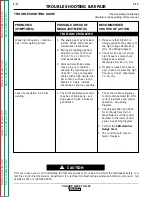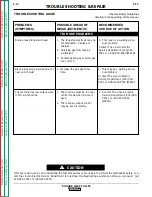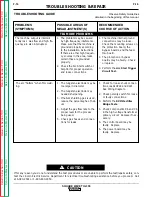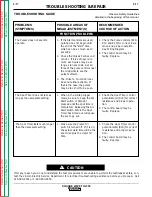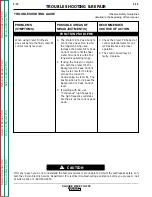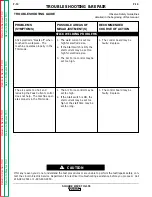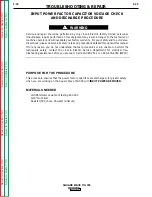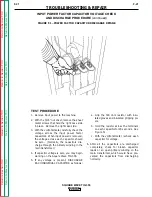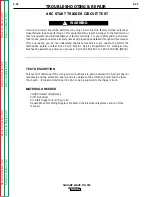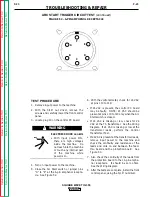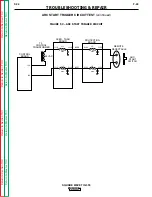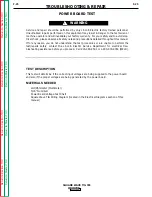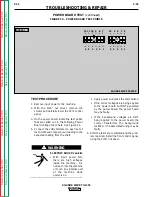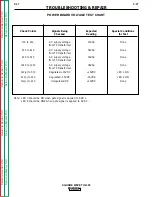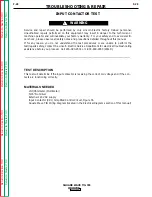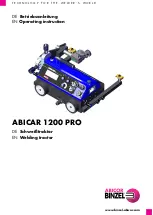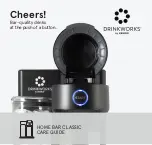
TROUBLESHOOTING & REPAIR
F-13
F-13
SQUARE WAVE TIG 355
TROUBLESHOOTING GUIDE
Observe Safety Guidelines
detailed in the beginning of this manual.
CAUTION
If for any reason you do not understand the test procedures or are unable to perform the test/repairs safely, con-
tact the Lincoln Electric Service Department for electrical troubleshooting assistance before you proceed. Call
216-383-2531 or 1-800-833-9353.
PROBLEMS
(SYMPTOMS)
POSSIBLE AREAS OF
MISADJUSTMENT(S)
RECOMMENDED
COURSE OF ACTION
TIG MODE PROBLEMS
Weak high frequency – machine
has normal welding output.
1. The spark gap may be misad-
justed. Check and reset per
maintenance instructions.
2. Improper shielding gas flow.
Adjust for a flow of 10 to 30
CFH (4.7 to 14.1 l/min.) for
most applications.
3. Work and electrode cables
may be in poor condition,
allowing the high frequency to
“leak off.” Use good quality
cables with a high natural rub-
ber content, such as Lincoln
Stable Arc Cable. Cables
should be as short as possible.
1. Make sure that 115VAC is
being applied to the primary of
the high voltage transformer
(T3). See Wiring Diagram.
2. Check for an open or arcing
high frequency component.
Replace as required.
(Examples: R6, C6, C3, R4)
3. If spark is weak at the spark
gap, check or replace the high
frequency circuit. (Examples:
T3, L4, L5).
Lack of penetration in AC TIG
welding.
1. The AC Wave Balance control
may be set improperly – set-
tings above 3 give increased
penetration.
1. Check the AC Wave Balance
control potentiometer (R12) for
correct resistance and proper
operation. See Wiring
Diagram.
2. Check leads #443 and #444
for continuity from the AC
Wave Balance control poten-
tiometer to the lower control
panel. See Wiring Diagram.
3. Perform the SCR Rectifier
Bridge Tests.
4. The control board may be
faulty. Replace.
Retur
n to Section TOC
Retur
n to Section TOC
Retur
n to Section TOC
Retur
n to Section TOC
Retur
n to Master TOC
Retur
n to Master TOC
Retur
n to Master TOC
Retur
n to Master TOC

